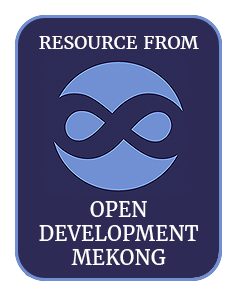DAI works on the frontlines of international development. Transforming ideas into action—action into impact. We are committed to shaping a more livable world.
DAI’s mission is to make a lasting difference in the world by helping people improve their lives. We envision a world in which communities and societies become more prosperous, fairer and better governed, safer, healthier, and environmentally more sustainable.
To achieve this mission, we must be a great place to work and we must be a successful business. We need to attract and retain extraordinary talent, and provide our team with professional opportunity, fair salary and benefits, and a healthy work-life balance. We also must perform as a business so that we can meet our obligations, invest in our future, and reward our employee owners. The more successful we are as a business, the greater development impact we can have.
In everything we do, we live by four core values:
- Integrity: we have an uncompromising commitment to civility and ethical behavior. We play by the rules and do the right thing.
- Responsibility: we are accountable to our clients, our colleagues, and the communities where we work. If we fall short, we own up, fix the problem, and get it right the next time.
- Excellence: we demand of ourselves the highest technical and professional standards. We celebrate innovation, learning, and service. We have an unwavering desire to “stretch,” as individuals and as an organization.
- Global Citizenship: we are a global company with a global outlook. We depend on our diversity, respect the cultures in which we work, and treat everyone, everywhere with professionalism and dignity. We thrive on collaboration with our partners around the world, and share with them the hope that our work will leave the world a better place.
Members:
Resources
Displaying 1 - 5 of 6USAID Mekong ARCC climate change impact and adaptation study for the Lower Mekong Basin, protected areas
This report provides an outline of protected areas and biodiversity in the Lower Mekong Basin. The analysis contains an overview of threats to protected areas from climate change, as well as non-climate threats such as land concessions, infrastructure development, illegal activities, and agriculture.
Protect a village of 155 households from erosion
General
155 households live in Gatebe 2 village in Rwanda, situated at the bottom of a hill . Due to heavy rain and unsustainable practices the community is hit by erosion and land degradation, threatening their subsistence farming livelihoods. Rwanda Development Organisation (RDO) plans to combat this situation by restoring the landscape by planting trees and improving drainage, and by sensitising the community about sustainable practices, including the distribution of 50 goats for organic manure.
RS! Sierra Leone Cocoa
General
To contribute to a sustainable and inclusive cocoa value chain, in which producers receive a fair value, and work in safe conditions, without the use child labour and land rights and forest are protected in Sierra Leone. The main objectives of the project are The target groups are producers organisations, women in cocoa, agriculture workers union Objectives 1. To create, strengthen and/or join in dialogue to enhance access to knowledge, information and credible evidence, where vulnerable groups are included and policy makers can make informed decisions. 2. To strengthen the ability of civil society to claim and defend their rights and influence decision making 3. To mobilise activate and engage citizens and CSOs to change norms and influence the policy agenda for the range of issues highlighted in the problem analysis
"for the Climate and Land Use Alliance program"
General
"This program grant will support ClimateWorks Foundation’s Forests and Land Use campaign, through the Climate and Land Use Alliance (CLUA). CLUA’s mission is to realize the potential of forested and agricultural landscapes to mitigate climate change, benefit people, and protect the environment, primarily in Indonesia, Brazil, and Mesoamerica. Land use—from deforestation, land degradation, and the draining and burning of tropical peatlands, to fertilizer application and rice and cattle production—is responsible for about 25 percent of human-related greenhouse gas emissions. More effective land use protects the climate by reducing carbon emissions and preserving nature’s vital carbon sinks. "
AF Land Registration & Cadastre System for Sustainable Agriculture Project
General
AF Land Registration & Cadastre System for Sustainable Agriculture Project



